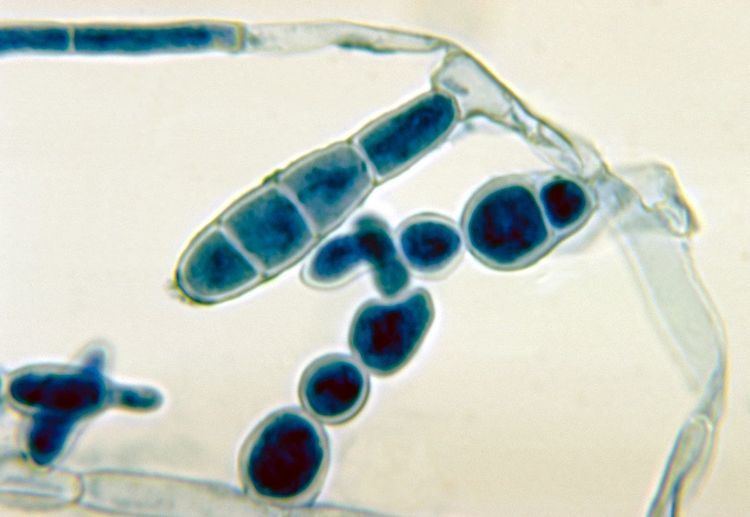Kingdom Fungi | Scientific name Epidermophyton floccosum Rank Species | |
 | ||
Similar Epidermophyton, Trichophyton, Trichophyton interdigitale, Microsporum canis, Microsporum | ||
Epidermophyton floccosum fungi kingdom
Epidermophyton floccosum is an anthropophilic dermatophyte (preferring humans to other hosts) which can be found worldwide.
Contents
- Epidermophyton floccosum fungi kingdom
- Epidermophyton floccosum birds butthole surfers
- Taxonomy
- Description
- Pathology
- References
Epidermophyton floccosum birds butthole surfers
Taxonomy
The fungus was originally described by Carl Otto Harz in 1870, who named it Acrothecium floccosum. It was later renamed Blastotrichum floccosum, a name given to it in Rabenhort's Krytpogamen Flora, (1907), and finally as Epidermophyton floccosum by Ota and Langeron in 1923.
Description
The fungus is a moderate grower that reaches maturity after 10 days. The colonies are usually grainy, have a suede-like texture, and may be olive, yellow, or yellow-brown in color. The central region is raised slightly. Fluffy white sterile mycelia cover the colonies after several weeks. Epidermophyton floccosum contains an unusual lipid of unknown function, 1(3),2-diacylglyceryl-3(1)-O-4′-(N,N,N-trimethyl)homoserine. Two other dermatophytes Microsporum cookei and Trichophyton rubrum do not contain this lipid. Microconidia are usually absent.
Pathology
The fungus is the only pathogen of the two species comprising genus Epidermophyton. Hosts of the fungi are humans, wild animals, and domestic animals. The fungi can cause tinea pedis, tinea cruris, tinea corporis, and onychomycosis. The infection spreads by contact, especially in gyms and showers. The infection can be stopped by bathing with soap and water and applying an appropriate fungicide. A study of 900 patients afflicted with E. floccosum infection investigating the contagious aspects of the fungus was conducted in Korea, from 1976 to 1997. The study found that fewer people were infected by E. floccosum than by other dermatophytes. The fungus may be transmitted between humans and squirrels. The fungi can usually only infect the nonliving cornified layers of epidermis. An invasive infection has, however, been recorded in an immunocompromised patient with Behçet's syndrome.
